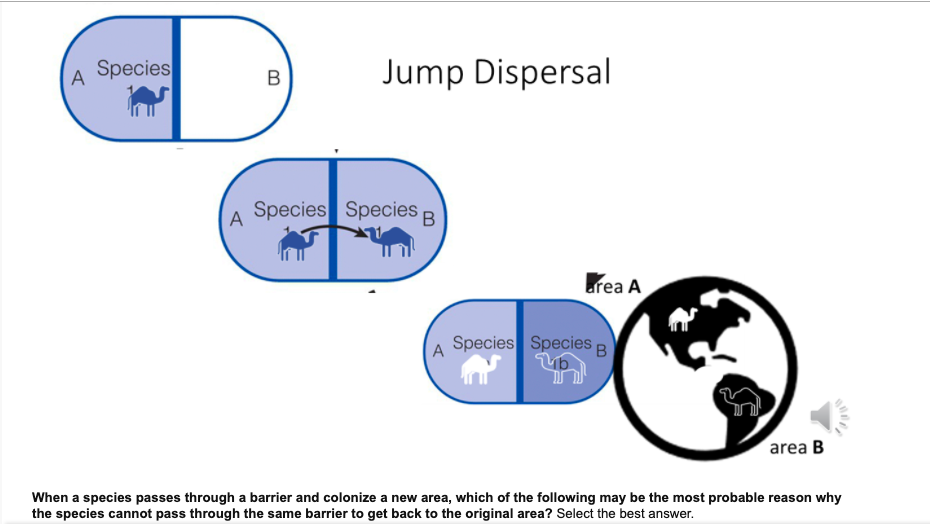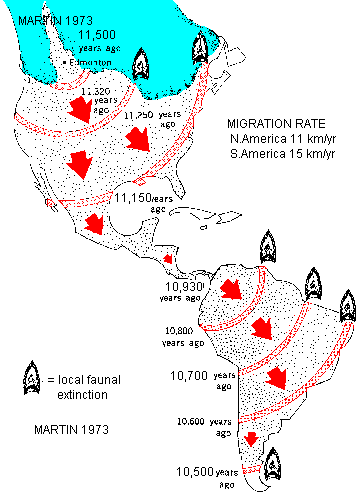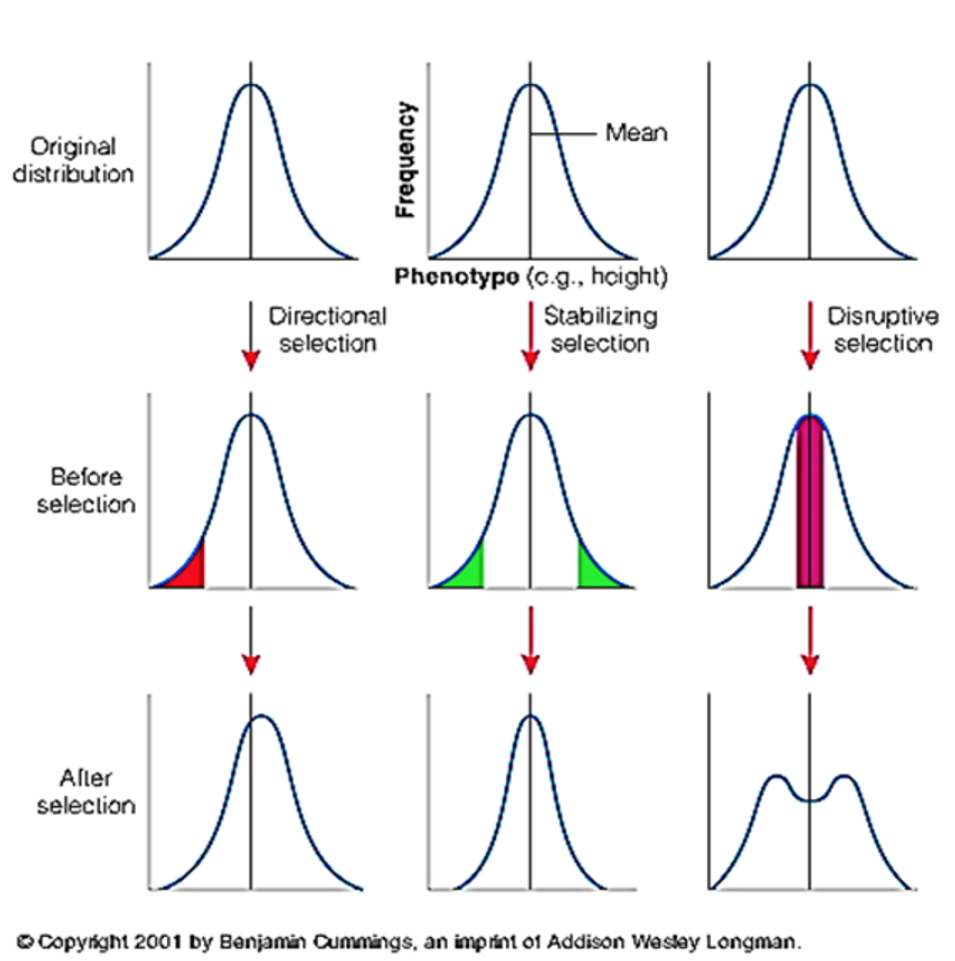Ecology Exam 2 Review
1/139
There's no tags or description
Looks like no tags are added yet.
Name | Mastery | Learn | Test | Matching | Spaced |
|---|
No study sessions yet.
140 Terms
Distribution
Geographic range/area occupied by species.
Dispersal
Ecological process involving movement of individuals away from their birthplace.
Natal dispersal
Movement and subsequent breeding away from the area of origin; practiced by plants and animals
Breeding dispersal
Movement from one area to another after the first breeding season; practiced by animals.
Benefits of Dispersal
Escape low-quality environments, access higher-quality resources, avoid competition, and avoid inbreeding.
Costs of Dispersal
Increased mortality, depletion of energy reserves, potential for no suitable habitat, and time away from other activities.
Passive dispersal
Movement that requires assistance from external factors such as wind, water, or animal vector; plants, some marine animals, & insects.
Active dispersal
Movement under an organism's own power with a choice in final location; animals including mammals and birds.
Barriers to Dispersal
Physical, physiological, and anthropogenic obstacles that affect organism movement.
Examples of physical barriers to dispersal
Open ocean, rivers, glacier, canyon, intervening land, etc.
Examples of physiological barriers to dispersal
Tropics, mountains, salt water, etc.; American pika unable to survive warm temperatures resulting in isolation on mountain tops if valley is too warm
Examples of anthropogenic barriers to dispersal
Roads, railroads, dams, etc.; direct or indirect impacts
Example of direct impact of anthropogenic barriers to dispersal
Wildlife Vehicle Collision Reduction Study: Report to Congress (2008)→1-2M vehicle collisions with wildlife
Example of indirect impact of anthropogenic barriers to dispersal
Barrier effects: occurs when animals do not cross roads due to physical structures or due to road avoidance behavior
Hydrochory
Dispersal of seeds or other reproductive parts by water.
Anemochory
Dispersal by wind.
Zoochory
Dispersal by animals, including external and internal dispersion.
Epizoochory
external
Endozoochory
internal
Anthropochory
Dispersal by humans
Corridor (Dispersal Route)
A route that allows the movement of most species between regions.
Favorable habitat: ends differ very little from corridor
Do not selectively discriminate
Similar community composition of plants & animals on both sides
Filter (Dispersal Route)
A selective connection between two regions allowing only some species to cross.
Community composition in habitats at either end can be diverse
Sweepstakes (Dispersal Route)
Crossing of a barrier by a rare chance event that usually involves hazardous routes.
Crossing is accidental
Survival unlikely
Survivors “win sweepstakes”
Ex: green iguana
Anthropogenic: positive consequences
Corn
Anthropogenic: negative consequences
European rabbit (Oryctolagus cuniculus), Thomas Austin
0 yrs: ~24 rabbits
7 yrs: ~14253 rabbits
10 yrs: ~2000000 rabbits
Wildlife corridors/crossings
Man-made linkages designed to help animals navigate man-made barriers; designed to connect vital habitats & allow safe movement of animals.
Trans Canada Highway Corridors
Banff National Park
38 underpasses
6 overpasses
Yoho National Park
1 underpass
Corridors built 1996-2014: reduced wildlife-vehicle collisions by 80% (96% elk/deer)
Jump Dispersal
Long distance movement usually across inhospitable terrain and in short time frame (within lifespan)
Disjunct/discontinuous: ≥2 groups with widely sep geography; sometimes caused by jump dispersal

Diffusion
Gradual expansion from the outer edge of a current distribution.
Successive generations
Hospitable terrain
Different individuals, same species

Secular Migration
Gradual migration coupled with evolutionary change over thousands to millions of years.
New species upon arrival (A→B)
Physiological Ecology
Study of organisms' reactions to physical and chemical factors.
Law of the Minimum
Yield is proportional to the amount of the most limiting nutrient.
Justus von Liebig
Growth is controlled by scarcest resource, not by total amt of resources
Law of Tolerance
Organisms can be limited in growth & occurrence not only by too little an element or too low an intensity of a factor, but also by too much of an element or too high of an intensity of factor
Victor Shelford
Natural Selection
Differential survival and reproduction of individuals resulting from environmental interactions.
Adaptation
Heritable trait that evolved to increase fitness under specific environmental conditions.
Fitness
Measure of an individual's contribution to future generations.
Evolution
Change in gene frequency over time.
Example of evolution
Industrial melanism in peppered moth (Biston betularia)
Industrial Melanism
Evolution of darker body colors in response to environmental pollution.
Fossil Record
Preserved remains of organisms from past geologic ages.
Hard body parts
Parts not delayed by conditions
Preserved traces
Morphological Convergence
Independent evolution of similar traits in unrelated organisms due to similar challenges.
Morphological Divergence
Divergence in traits over time that may or may not result in speciation.
Change from body form of common ancestor
Ex: artificial selection
Artificial Selection
Process by which humans use animal/plant breeding to selectively develop particular traits by choosing & controlling individual reproduction
Domesticated Animals
Animals that have been selectively bred by humans.
Domesticated Plants
Plants selectively bred for specific traits by humans.
Antibiotic Resistant Bacteria
Bacteria that have developed resistance to antibiotics.
Ex: Staphylococcus aureus→methicillin-resistant S. aureus (MRSA)
Requirements for evolution in population
Heritable traits
Genetic variation
Selective pressure
Time
Acquired characteristic
Modification produced in individual as result of environmental influence
Jean-Baptiste Lamarck
Giraffe example: able to lengthen neck over lifetime & pass trait to offspring; able to lengthen neck due to feeding behavior
Genotype
Genetic makeup of an organism.
Phenotype
Physical or chemical expression of an organism's traits.
Allele
One of ≥2 alternative forms of a gene.
Dominant Allele
An allele that is expressed in the phenotype; denoted by an uppercase letter.
Recessive Allele
An allele that is masked in the phenotype; denoted by a lowercase letter.
Homozygous
When an individual has 2 identical alleles for a gene.
Heterozygous
When an individual has 2 different alleles for a gene.
Punnett Square
Tool used to predict genotypes and phenotypes of offspring.
Ploidy
Number of copies of chromosomes
Haploid: one copy of each chr
Diploid: two copies of each chr
Triploid: 3
Tetraploid: 4
Hexaploid: 5
Octoploid: 8
Decaploid: 10
Law of Segregation
2 alleles for each gene segregate during gamete formation.
Law of Independent Assortment
Alleles for different traits assort independently of one another.
Genotypic ratio example
RR, RrrR, rr (1:2:1)
Phenotypic ratio example
RR, RrrR, rr (3:1)
Allelic ratio example
RR, RrrR, rr (1:1)
Hardy-Weinberg Principle
Allelic and genotypic frequencies remain constant in a stable population.
Requirements for Hardy-Weinberg quilibrium
Large population→reduces genetic drift
No mutations
No immigration/emigration
No selective pressure
Random mating
Random mating
Alleles (carried by gametes) would come together strictly in proportion to their frequencies in population as a whole
What typically occurs instead of random mating?
Inbreeding, geographic structuring, or assortative/selective mating
Genetic Drift
Change in allele frequencies due to chance or random events; reduce genetic variation
Increases frequencies of some alleles & decreases frequencies of other alleles without adaptation
Hardy-Weinberg Equations
Mathematical equations used to calculate allele and genotype frequencies in a population.
Genotypic Ratio
Ratio of genotypes in offspring, often expressed as a ratio such as 1:2:1.
Phenotypic Ratio
Ratio of phenotypes in offspring, often expressed as a ratio such as 3:1.
p+q=1
p=frequency of dominant allele in population
q=frequency of recessive allele in population
p2+2pq+q2=1*
p2=frequency of homozygous dominant genotype in population
2pq=frequency of heterozygous genotype in population
q2=frequency of homozygous recessive genotype in population
*binomial expansion of (p+q)2=1
Allelic Ratio
Ratio of alleles present in offspring.
Steps for Hardy-Weinberg problems
Write both HW equations
Write out what each of the variables in both equations mean
Determine what you have been given
Determine what you are solving for
Work the problem
Sampling Shift
Change in allele frequencies within a population due to sampling frequency.
Recessive disease
Occurs when 2 copies of an abnormal recessive allele are present; q2
Carrier
Individual with only 1 abnormal recessive allele that can be passed to offspring; does not have the disease; heterozygous (2pq)
Selection
Objective force acting on populations that alters allele frequencies.
Directional
Stabilizing
Disruptive

Directional Selection
Selection that favors one extreme phenotype over others; pushes population in one direction.
Stabilizing Selection
Selection that favors intermediate phenotypes rather than extremes; pushes population in 2 directions.
Ex: Mocker swallowtail butterfly & Batesian mimicry
Disruptive Selection
Selection that favors extreme phenotypes and acts to reinforce traits; bimodal distribution with 2 peaks.
Acts as conservative force in population→stabilize & reinforce
Speciation
Evolutionary process by which new species arise from existing ones.
Biological Species Concept
Species is a group of organisms that can potentially interbreed w/ one another to produce viable, fertile offspring.
Speciation occurs as subset of an original population becomes…
reproductively isolated from other subsets of original population by some mechanism of reproductive isolation.
Reproductive Isolation
Mechanisms that prevent interbreeding between populations.
Habitat isolation
Temporal (time) isolation
Behavioral isolation
Gametic isolation
Habitat Isolation
Isolation due to differences in habitat preferences.
Temporal Isolation
Isolation due to differences in breeding times.
Behavioral Isolation
Isolation caused by differences in mating behaviors.
Gametic Isolation
Isolation due to incompatibility of gametes.
Allopatric (Geographic) Speciation
Requires a physical barrier (glaciers, mountains, deserts, intervening land between small lakes, islands, etc.); most common
Parapatric Speciation
Occurs when populations are separated by change in habitat; while populations in these areas may interbreed, they often develop distinct characteristics & lifestyles
Ex
Tennessee cave salamander (Gyrinophilus palleucus): subterranean, paedomorphic
Spring salamander (Gyrinophilus porphyriticus): epigean, metamorphic
Sympatric Speciation
Reproductive isolation occurs without a physical separation, inside a continuous habitat
Ex: European blackcap
To Britain: shorter route, return sooner, seasonal mate
Wings shorter & rounder
Beaks for seeds
To Spain: longer route, return later
Wings longer & pointier
Beaks for fruit
Polyploidy
Condition of having >2 sets of chromosomes.
Nondisjunction error
Diploid parent makes diploid gamete
Ex: diploid parents→diploid gametes→tetraploid offspring
Homeostasis
Tendency of organism to regulate its internal environment & maintain appropriate conditions when faced with changing external environment
Homeostasis conditions
Temperature
Water balance
pH
Dissolved oxygen
Ion balance
Glucose concentration
Homeostatic mechanisms use _______ to maintain conditions at set point or within operative range
negative feedback
Negative feedback
Process that reduces/reverses reaction/output to maintain stability
Ex: HVAC & thermostat, shiver in cold for warmth, and sweat in heat to cool
Thermoregulation
The process of maintaining an optimal internal temperature.
Enzymes & thermoregulation
Impaired structure→impaired function
Cold→rigid
Hot→denature